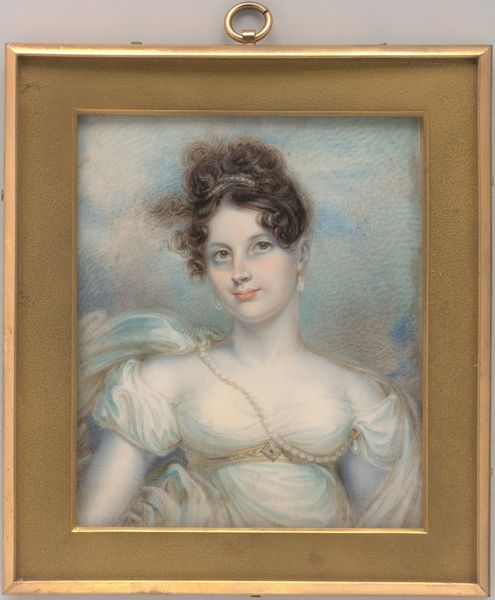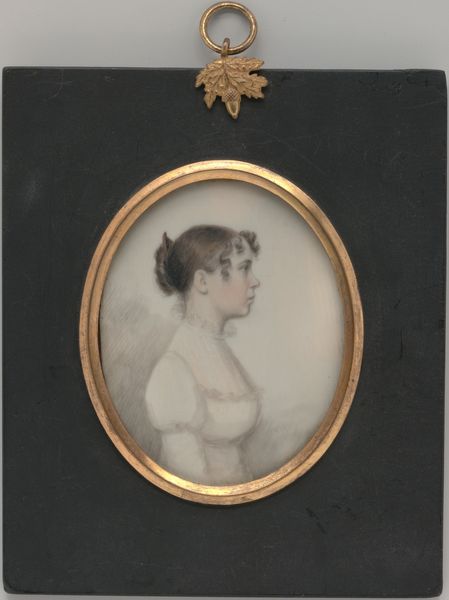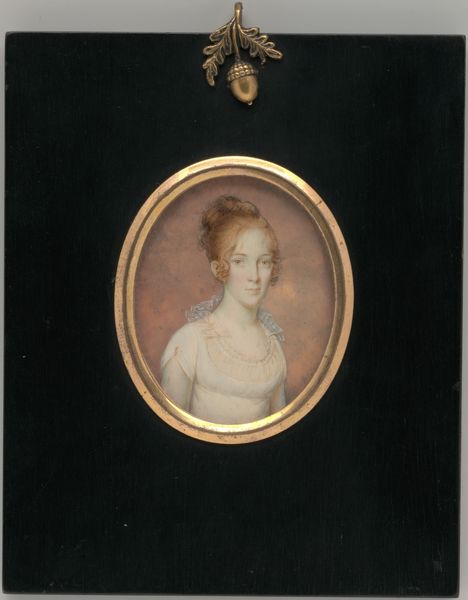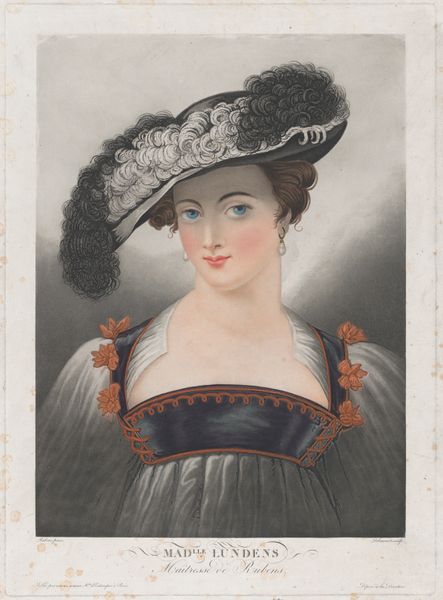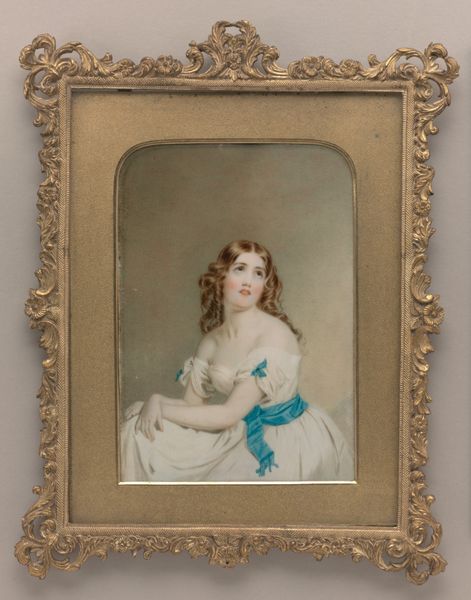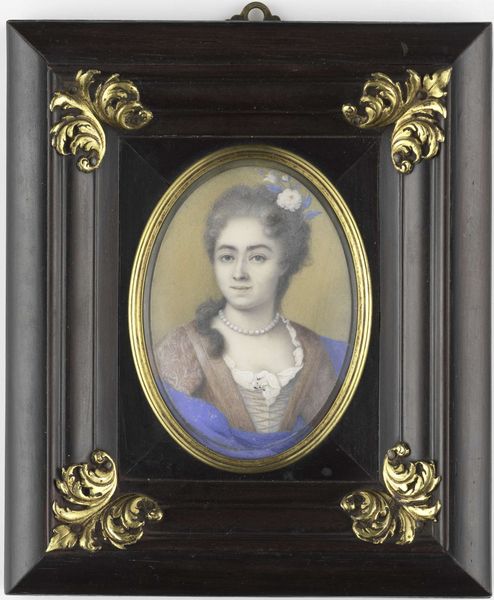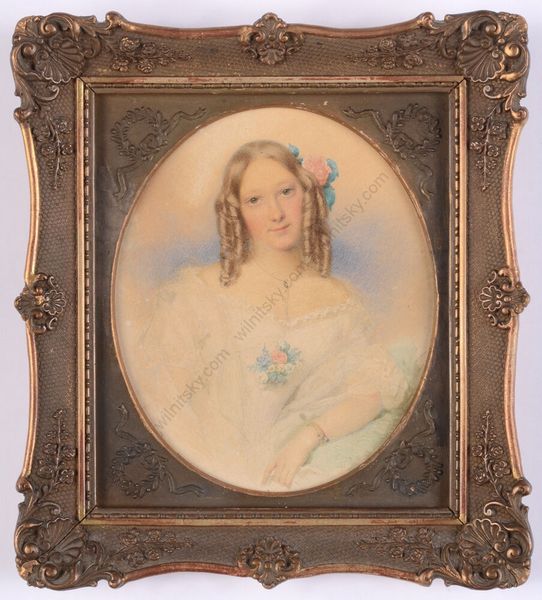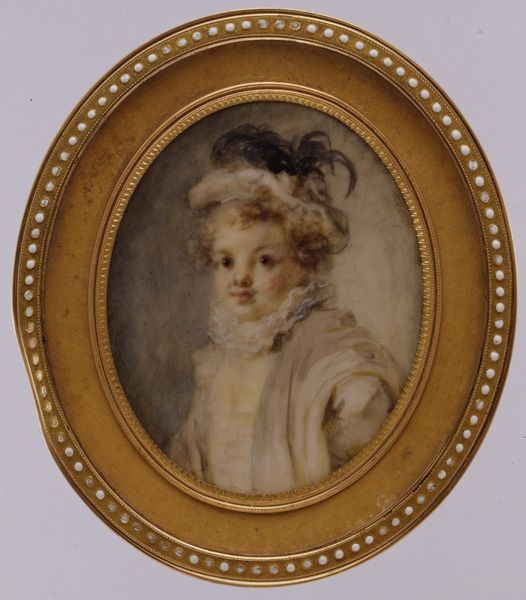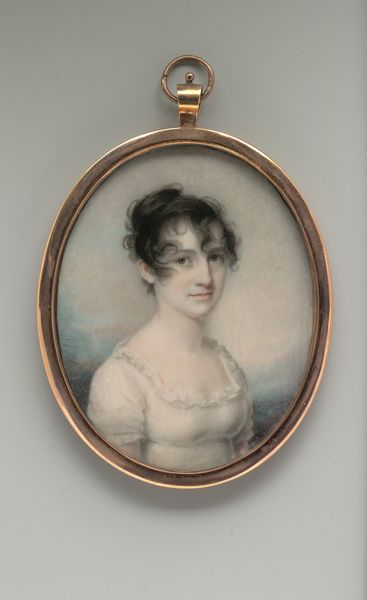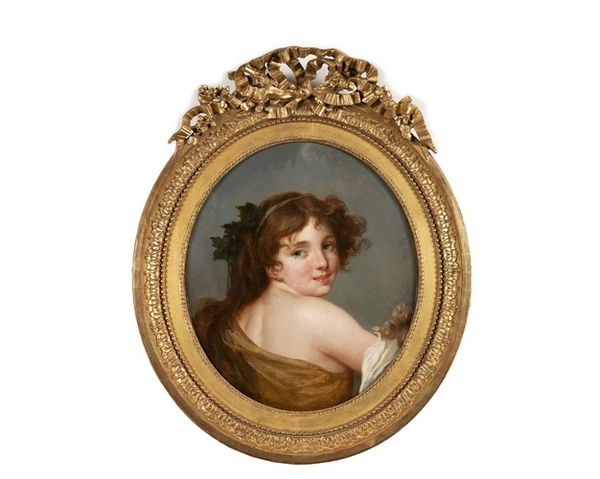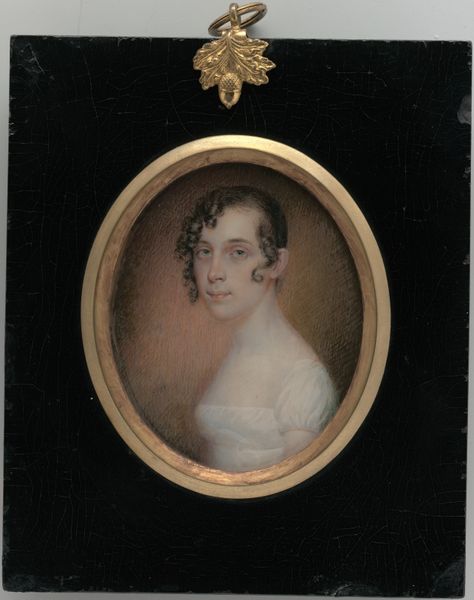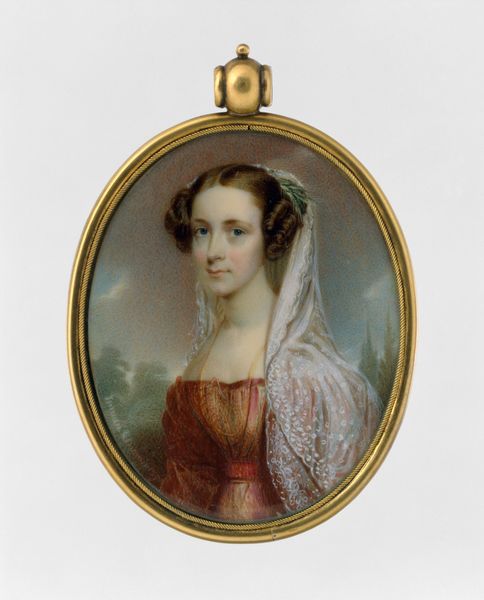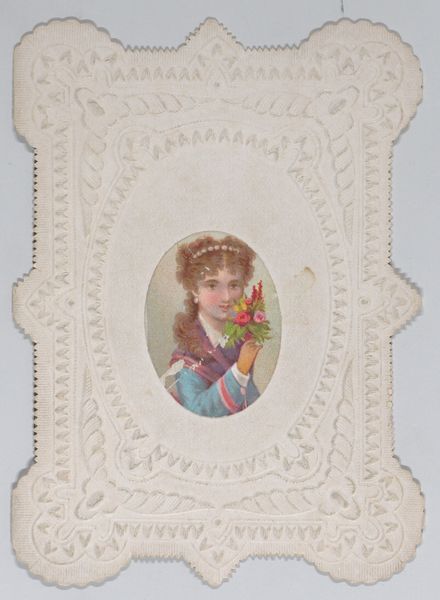
Mrs. Rufus Prime (Augusta Temple Palmer, 1807–1840) 1828
0:00
0:00
painting, watercolor
#
portrait
#
painting
#
oil painting
#
watercolor
#
romanticism
#
watercolor
Dimensions: Oval, 5 3/8 x 4 in. (138 x 102 mm)
Copyright: Public Domain
Curator: Here we have Jean-Baptiste Isabey’s watercolor on ivory, "Mrs. Rufus Prime (Augusta Temple Palmer, 1807–1840)," created in 1828. It is housed in an elaborate gilt-bronze and wood frame. Editor: It's striking how the soft pastel tones give such a gentle, almost ethereal quality to the portrait. It’s easy to imagine this hanging above someone's writing desk as a private, sentimental object. Curator: These portrait miniatures served precisely that purpose, operating within a specific socio-political context of family ties, wealth and display. Mrs. Prime came from a privileged background, so this was probably made as a sentimental exchange between family members. Editor: The rendering of the dress and the feathery hat especially highlight her status, almost declaring a carefully constructed identity. Considering the social expectations for women during the Romanticism era, one wonders if this level of refinement masked underlying societal pressures. Curator: Indeed. Women's lives at that time were circumscribed by domestic roles and expectations, yet within those boundaries, individuals exercised agency. A portrait like this immortalizes that agency within those confines, simultaneously reflecting and possibly subverting societal norms. We can examine the sitter's direct, self-possessed gaze as an expression of that agency. Editor: Her look carries the weight of these complex social structures, definitely. The details such as her dress, that elaborate hat with plumes – even the golden frame – each contribute to a narrative of self-presentation amid societal pressures. It becomes something far beyond a mere pretty picture. Curator: And to understand the cultural role of portraiture within elite social strata of 19th century New York sheds light on the public face of art and the implicit politics embedded within even the most intimate of images. Editor: Looking at this piece from that perspective allows us to see the quiet acts of resistance or compliance interwoven in what seems at first glance to be only a delicate miniature. Curator: A compelling reminder that even the smallest artwork can tell a powerful story about the individual and the world they inhabited. Editor: A story waiting to be unpacked through a deep reading of art history!
Comments
No comments
Be the first to comment and join the conversation on the ultimate creative platform.
